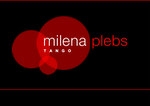
See english translation below
Últimamente he leído declaraciones de colegas que hablan del tango tradicional como “formas envejecidas”, hablando de baile y de música. En cuanto al baile, en mi opinión, un tango improvisado, liso y caminado “es”, nunca envejece, porque es la matriz de donde salió todo, es la síntesis. No hay nada más moderno que un tango caminado, con simples cambios de frente. Sencillamente “es”, transcurre en el presente. Caminar el tango es el abc y no se puede ignorar el abecedario para hablar. Después esos elementos base se usan como herramientas para las investigaciones. Con la evolución del tango y las diversas búsquedas esa matriz se va puliendo, refinando y ajustando en la síntesis. Lo que quizás pasa de moda son los estilos. Mejor dicho, los amaneramientos o clichés de esos estilos. Lo que sí envejece es el artista mediocre, el que copia.
Algo similar pasa con la música: Carlos Di Sarli, Osvaldo Pugliese, Aníbal Troilo, Julio De Caro, Horacio Salgán, Ástor Piazzolla, etc. tienen una originalidad y riqueza rítmica y melódica extraordinarias. Inspiración, juego e intensidad llevados al extremo. ¿Quién se atreve a afirmar que su música ha envejecido? Personalmente, no siento que los compositores pos–piazzolla hayan superado a los grandes del tango.
En el baile apareció una nueva corriente a fines de los ‘90 que rompió la estructura tradicional del baile, generando un movimiento alternativo, que, a mi entender, terminó enriqueciendo al más puro baile tradicional. Los bailarines jóvenes defensores del tango tradicional también incorporan algunos elementos de la nueva corriente, y esto cambia el baile para mejor. Las nuevas formas se filtran hasta sin darnos cuenta. Todos los encasillamientos son malos. No podemos negar de donde venimos, ni tampoco lo nuevo que aparece, que nos cambia aunque no queramos.
De viaje por el mundo veo gente que incursiona en esta nueva corriente que muchos llaman Tango Nuevo sin pasar primero por las raíces. Les falta algo, el baile tiene algo de parodico y es peligrosamente lejano a los orígenes. Afortunadamente siempre existen puristas que conservan la tradición y, gracias a la oportuna llegada de los registros en cine y video, existen documentos de la más pura tradición del baile. Cíclicamente ocurre un regreso a las fuentes que no permite que los caminos de la evolución se dispersen en demasía y pierdan definitivamente la esencia que mantiene al tango vivo a través de las generaciones y sus cambios. •
Copyright © El Tangauta 2008
TANGO, A CLASSIC
Lately I have read statements from colleagues that speak of the traditional tango as “aged forms”, speaking of dance and of music. As for the dance, in my opinion, a smooth, improvised and walked tango “is”, never ages, because it is the matrix from where everything was born; it is the synthesis. There is nothing more modern than a walked tango, with simple changes of front. It implies “is”, it takes place in the present. Walking the tango is the abc, and the alphabet cannot be ignored to speak. Later those basic elements are used as tools for research. With the evolution of tango and its diverse searches, that matrix gets polished, is refined and adjusted in the synthesis. What perhaps goes out of fashion is styles–better said, the mannerisms or clichés of those styles. What does age is the mediocre, the artist who copies.
Something similar happens with the music: Carlos Di Sarli, Osvaldo Pugliese, Aníbal Troilo, Julio de Caro, Horacio Salgán, Ástor Piazzolla, etc. all have originality and extraordinary melodic and rhythmic wealth. Inspiration, play and intensity are carried to the extreme. Who dares to say that their music has aged? Personally, I do not feel that the post–Piazzolla composers have surpassed the great names of tango.
In the dance a new current appeared at the end of the 90s that broke the traditional structure of the dance, generating an alternative movement, that, I believe, ended up enriching the purest traditional dance. Young dancers that defend traditional tango also incorporate some elements of the new current, and this changes the dance for the better. The new forms filter in, even without us noticing. All pigeonholing is bad. We cannot deny where we come from, or the new things that appear, they change us in spite of ourselves.
Traveling through the world I see people that enter in this new current that many call Nuevo Tango without going first through its roots. They lack something, the dance appears as something of a parody and is dangerously distant from the origins. Fortunately purists always exist that preserve the tradition and, thanks to the opportune arrival of movies and videos, documents of the purest tradition of the dance exist. There is a return to the sources that occurs cyclically that does not allow the roads of evolution to stray too much and lose in the end the essence that keeps tango alive through generations and their changes. •
Copyright © El Tangauta 2008
Publicado en El Tangauta - EDICION nro 161
Traducción: Dolores Longo.






No hay comentarios:
Publicar un comentario